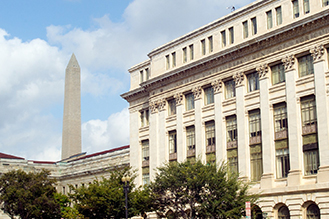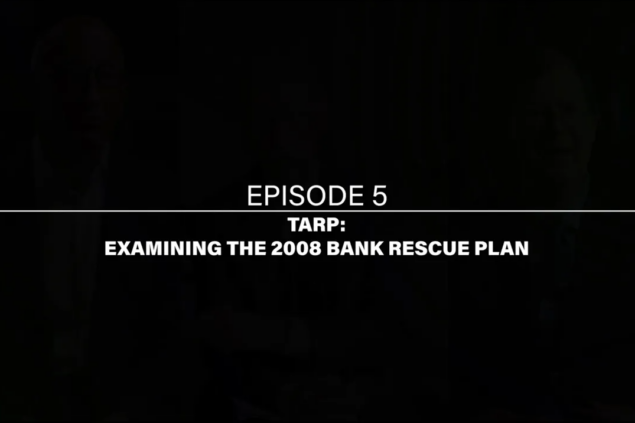The Dangers of Independence for Executive Branch Agencies
Peter Wallison

In a decision filed on July 16, a three judge panel of the 5th Circuit Court of Appeals held 2-1 that the Federal Housing Finance Agency (FHFA)—the regulator and conservator of the government sponsored agencies (GSEs) Fannie Mae and Freddie Mac—was unconstitutionally structured because the director of the agency was appointed for a term of five years and could not be removed from office by the president except “for cause.”
In a sense, this case was another test of the question addressed en banc by the D.C. Circuit Court in PHH v. CFPB.
In that widely covered case, a three judge panel of the Court, in a unanimous decision written by Judge Brett Kavanaugh, also held that the Consumer Financial Protection Bureau (CFPB) was unconstitutionally structured because the director of that agency was also appointed for a term of five years and could not be removed from office by the president except for “inefficiency, neglect of duty, or malfeasance in office.” The panel’s decision was then reheard en banc, and overturned. “Armed with the power to terminate such an ‘independent’ official for cause,” said the en banc court, “the President retains ‘ample authority to assure’ that the official ‘is competently performing his or her statutory responsibilities.’”
The 5th Circuit’s contrary decision, in the wake of PHH, again raises the question whether Congress can, consistently with the Constitution, place restrictions on the power of the president to dismiss officers of the executive branch when he is enjoined by Article II, section 3, to “take Care that the Laws be faithfully executed.” The PHH decision was never appealed to the Supreme Court, but it seems unlikely, with two decisions of circuit courts with diametrically opposed outcomes on similar fact patterns, that the Supreme Court will not hear an appeal if one is taken from the 5th Circuit’s decision. In that event, how should the Supreme Court resolve this controversy?
In the FHFA case, the 5th Circuit noted: “While ‘[t]he Supreme Court has long recognized that, as deployed to shield certain agencies, a degree of independence is fully consonant with the Constitution,’ a vast ‘field of doubt’ remains regarding how much Congress can insulate an independent agency from Executive Branch influence. In other words: ‘where, in all this, is the role for oversight by an elected President?’”
This is the right way to approach the issue. Both circuit courts tried to determine how much independence would be too much. It was a lawyerly way to proceed, but it missed the big picture. A better way to consider the equities of Congress and the president might be to consider whether any independence is justified. The inquiry instead should begin with this question: why should the directors of the CFPB or the FHFA be independent of the president? Is there something about these two agencies that requires independence in order to be administered properly? If that can’t be demonstrated, then any restriction on the ability of the president to remove the director from office should be unconstitutional.
The Framers recognized that the Constitution was only a piece of paper, and could not be expected to last over the long term if it was founded only on the power of its words. To ensure that it would survive the storms of the future, the Framers devised checks and balances to go with the separation of powers. Each of the branches would have some way to hobble the others, and thus to prevent the others from accruing too much power. The president could veto legislation; Congress could cut appropriations and impeach executive branch officers; the courts could interpret the laws narrowly, and the Congress could increase or decrease the number of judges.
But while this rivalry was salutary, it could be abused. Ultimately, Congress has the power to nullify the power of the president by placing administrative agencies outside the president’s control. In most legislation, Congress empowers an agency or an administrator, not the president. The administrator of the Environmental Protection Agency—not the president—is the one who received the power to protect the environment. The president ensures that the administrator follows the president’s policies because the president can remove the administrator at will. The same is true of the secretaries of the major cabinet departments; the secretaries of labor, commerce, and defense—not the president—were the officials that Congress authorized to act in their respective areas. In other words, the president’s authority to pursue any policy is completely dependent on his ability to remove the person who holds the position that Congress authorized to act.
Looked at from that point of view, it is obvious that the president’s power of removal is the linchpin of his ability to carry out the policies he was elected to pursue. The ability to tamper with the power of removal, accordingly, is more than a detail; it goes to the heart of the presidency. It is not impossible to imagine that at some future time, when politics and partisanship has driven a deep divide between the two elected branches, Congress will decide to restructure a major executive branch agency in such a way as to make it independent of the president. If that happens, a Supreme Court precedent that looks only at what degree of independence is permissible will be very troublesome to the functioning of the government.
There may be cases where executive branch officials need to be independent of the president, but they are likely to be exceedingly few. The Supreme Court, if it takes an appeal from the 5th Circuit’s decision, should approach the issue from this perspective.

Author
Senior Fellow, Arthur F. Burns Fellow in Financial Policy Studies
American Enterprise Institute
Topic
The Federalist Society and Regulatory Transparency Project take no position on particular legal or public policy matters. All expressions of opinion are those of the author(s). To join the debate, please email us at [email protected].




